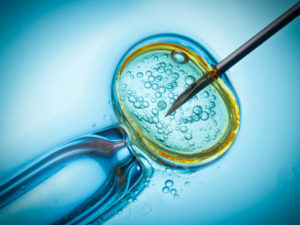 Have you been thinking about fresh vs frozen embryo transfer lately? We got some answers for you here. During an IVF cycle, the fertility specialist retrieves your eggs. If you have several eggs retrieved, the expert then creates several good quality embryos by fertilising the eggs with sperm. You can freeze these extra embryos for future use. You do, however, have the option to begin with a Fresh Embryo Transfer.
Have you been thinking about fresh vs frozen embryo transfer lately? We got some answers for you here. During an IVF cycle, the fertility specialist retrieves your eggs. If you have several eggs retrieved, the expert then creates several good quality embryos by fertilising the eggs with sperm. You can freeze these extra embryos for future use. You do, however, have the option to begin with a Fresh Embryo Transfer.
For those who think that every time we should try with fresh embryo. In reality, women who undergo IVF cycles go through a lot physically and mentally. Thus, the fewer the cycles are, the better it is for you. The wiser option is to collect as many good-quality eggs in the first go to maximise the chances of conception. It could happen that if you collected one egg and that egg doesn’t fertilise or become a good-quality embryo. Spare eggs increase your chances of pregnancy.
What is a Fresh Embryo Transfer?
The surgeon implants fresh embryo two to five days after the egg retrieval. The embryologist explains why they suggest a particular embryo out of all of the created embryos. As it is a very quick and simple procedure, it doesn’t require any anesthesia. You can continue to do your daily activities without any issue.
What is a Frozen Embryo Transfer?
After a Fresh Embryo Transfer, you can freeze the remaining embryos, if you want. This is done by a rapid freezing process known as vitrification. The embryologist stores frozen embryos to be used in future. The embryologist thaws the frozen embryos when they have to be used for frozen embryo transfer. The expert removes individual blastocyst from liquid nitrogen and replaces the cryoprotectant with water. It is a 15-minute process.
Both the procedures have same success rate. But, the frozen embryo transfer is an easy process. In fresh embryo transfer, the expert has to stimulate the ovaries. However, frozen embryo transfer is only about correct timing in both a natural cycle or in a controlled medicated cycle.
The fertility specialist conducts a baseline check of the lining of your uterus at the beginning of your cycle and does another check a few days before transfer. The doctor makes sure that the lining is optimum for transfer.
There is no time restriction for the use of the frozen embryos. A Frozen embryo cycle is cheaper as compared to the full IVF cycle as it is just a part of the full cycle.
